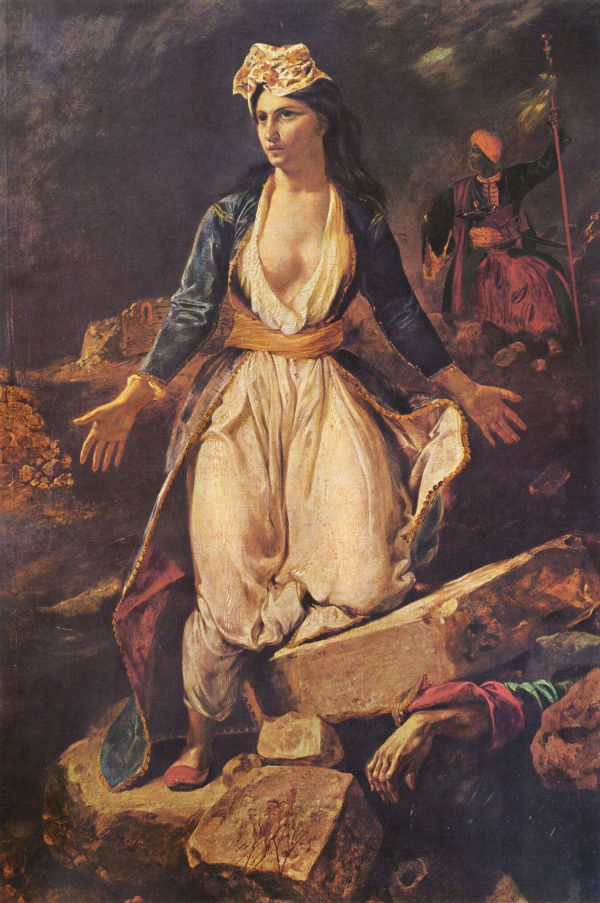Facts About Greece on the ruins of Missolonghi
Eugène Delacroix's painting "Greece on the Ruins of Missolonghi" created in 1826, is housed in the Musée des Beaux-Arts de Bordeaux. This poignant artwork draws its inspiration from the Third Siege of Missolonghi in 1826, a calamitous event where many inhabitants, in a desperate attempt to evade capture, faced tragic consequences, resulting in significant loss of life.
In this evocative piece, Greece is personified as a mourning woman clad in traditional Greek attire. She kneels with arms outstretched in a gesture of sorrow and supplication. At her feet, the hand of a fallen victim emerges from the rubble, underscoring the human toll of the conflict. In the background, the figure of an enemy soldier planting a flag represents the Ottoman forces that besieged the city.
Delacroix skillfully integrates Christian imagery into the painting. The figure of Greece mirrors early Christian depictions of a praying woman, evoking a sense of piety and desperation. Her blue and white garments subtly reference the Virgin Mary, creating a powerful secular icon that underscores both the sanctity and suffering of the Greek people.
The painting vividly captures the devastation of the Missolonghi siege, blending historical events with rich symbolism and religious undertones. Delacroix's work elicits a profound emotional response, reminding viewers of the tragic human cost of war.

 Italy
Italy